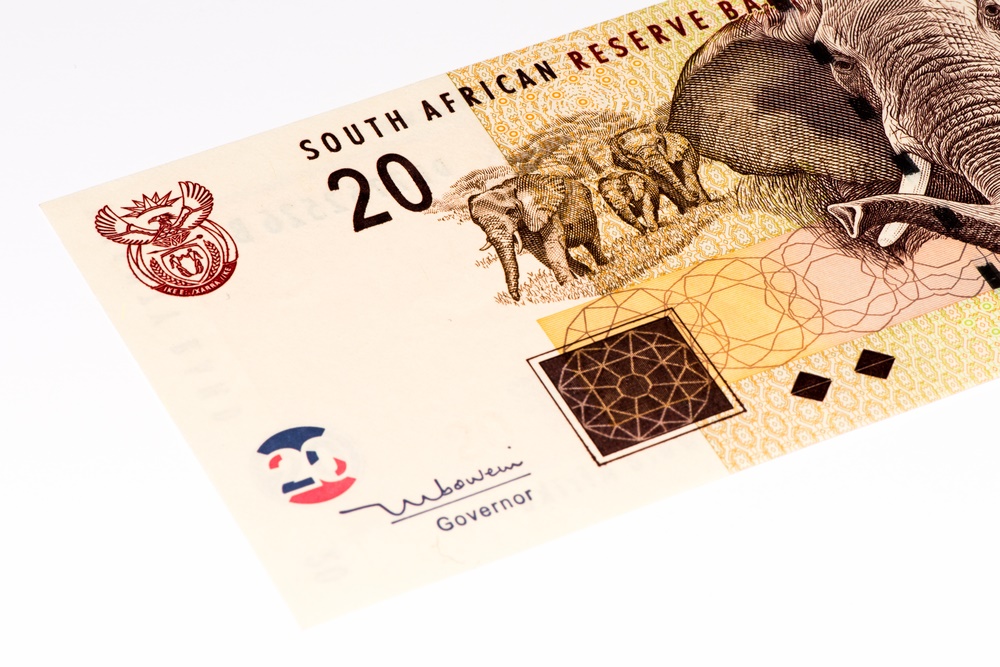When it comes to trading currencies, investors tend to stick to currency pairs that they are familiar with. Trading G10 currencies is where most investors are comfortable to position themselves.
However, this leaves a world of opportunity that is left unexploited in the currencies of some of the biggest Emerging Market countries. They are sometimes some of the most volatile currency pairs. As any experienced trader will tell you, volatility presents a lucrative opportunity to make profit from extreme swings in the value.
An overview of the ZAR
When it comes to some of the best performing Emerging Market currencies of 2016, the South African Rand has proven it’s worth. The South African economy is the most powerful on the African continent and hence has the most liquid financial market.
The trade volumes in the South African rand on a relative basis is similarly outsized. When looking at the other BRIC countries (Brazi, Russia, India and China), the average trading volume as a percentage of GDP is approximately 3.5%. The total volume of ZAR turnover is a staggering 16% of South Africa’ GDP.
This points to the increasing demand from international investors for the currency. Given the relatively high interest rates in South Africa, the currency is also a well known target for the carry trade.
A history of USDZAR volatility
Among traders at investment banks, the South African rand is sometimes nicknamed the “widow maker”. When a trader has to buy $100m dollars worth of the currency, extreme moves and sudden liquidity changes can be a scary experience.
Sometimes, geo-politics and economic announcements will have an outsized effect on the movement of the currency pair. A shakeup in the Finance ministry, or a minor musing by the fed can send the pair into volatile spikes.
As an example, at the end of last year, USDZAR fell by 7% in 2 days when the president decided to replace the finance minister. The president then had a change of heart 3 days later after seeing the effects on the currency and it appreciated by 5% immediately prior (see chart). Although this volatility can be a scary scenario for a fund manager with millions on the line, for the astute personal trader, these moves can be capitalized upon.
The fundamental outlook for ZAR
Like almost all participants in the Currency markets, nobody was expecting a Trump win in the U.S. presidential election. Most emerging market currencies sold off as money started flowing back to the U.S. Higher bond yields in the U.S. led to less demand for the EM carry trade. This resulted in a reversal of the strengthening trend that the Rand was on over the past few months as it breached the 14 level.
There are a number of key events to watch over the coming months to determine the direction of the USDZAR. The first among them is any further clear policy prescriptions from a Trump administration. If the economic stimulus starts increasing interest rates and U.S asset prices, the carry trade will indeed continue to unwind with increasing pressure on the Rand.
Closely aligned with this is the impact of any further interest rate announcements from the Fed in December. The chances of Yellen increasing the base rate in December is now even more likely.
On the South African economic scene, the major talk is on the ratings agencies. Moody’s and S&P may decide to cut the current investment grade rating. This could lead to a large depreciation in the value of the currency. S&P could make an announcement on their position on the 2nd of December. Many financial analysts believe there is slightly more than a 50% chance of a downgrade given lower growth forecasts. If there is a downgrade, expect USDZAR to breach the 15 level and continue from there.
The Technical Outlook for ZAR
Looking at the USDZAR chart currently, it appears as if market participants are expecting the downgrade and fed increase and are adjusting their portfolio. The appreciating trend appears to have reversed with the 20 day moving average surpassing the 50 day moving average.
We can also see that there is positive momentum in favor of more USDZAR depreciation. This also appears to not be oversold as the RSI indicator is still within normal levels.
How to trade the USDZAR
Given the great uncertainty over the pair on both the USD and ZAR side, one of the best instruments that the trader could use to take advantage of the anticipated volatility are Option strategies.
With the above analysis, a trader would be wise to enter a CALL option on USDZAR with expiry just prior to the 2nd of December. In order to protect a position from potential downside shocks (ratings kept unchanged), a trader could enter a PUT option immediately prior to any announcements. This would allow the trader to lock in potential gains over the two weeks prior. Of course, there could be indications from the rating agencies and Fed prior to the 2nd of December that could further shape a traders view on these potential announcements. If a rate hike or rating downgrade looks more likely, then placing the PUT option may not be necessary.




